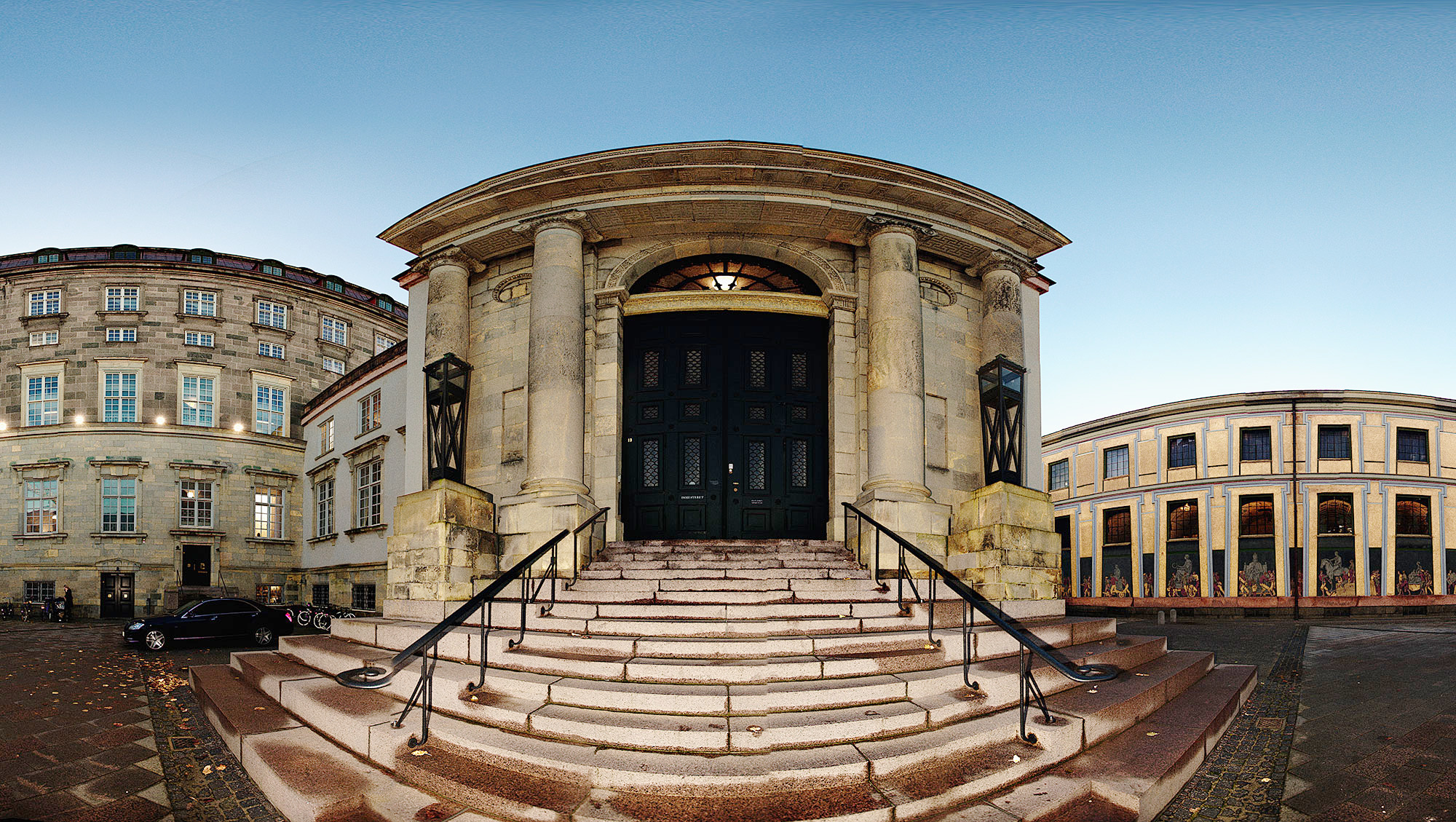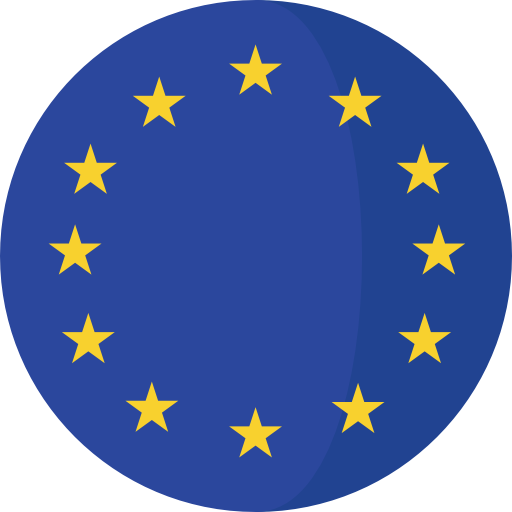
漢德百科全書 | 汉德百科全书
 Law
Law


大宪章(拉丁语:Magna Carta,英语:The Great Charter)又被称作自由大宪章(拉丁语:Magna Carta Libertatum,英语:The Great Charter of the Liberties),是英格兰国王约翰最初于1215年6月15日在温莎附近的兰尼米德订立的拉丁文政治性授权文件;但在随后的版本中,大部分对英国王室绝对权力的直接挑战条目被删除;1225年首次成为法律;1297年的英文版本至今仍然是英格兰威尔士的有效法律。
这份由坎特伯里大主教史蒂芬·朗顿起草的大宪章乃封建贵族用来对抗英国国王(主要是针对当时的约翰)权力的封建权利保障协议。订立大宪章的主因是教皇、英王约翰及封建贵族对王室权力出现意见分歧。大宪章要求王室放弃部分权力,保护教会的权力,尊重司法过程,接受王权受法律的限制。大宪章是英国在建立宪法政治这长远历史过程的开始。
约翰死后,亨利三世的摄政政府为了争取支持,在删除了一些比较极端的条款后,于1216年重新颁布了“大宪章”。到1217年第一次诸侯战争结束时,亨利三世颁布的大宪章成为了停战协议的一部分。由于资金匮乏,1225年,亨利再次颁布了“大宪章”,以此换取征收新税的权力。亨利三世的儿子爱德华一世在1297年也采取了同样的措施,爱德华一世确认了大宪章是英格兰成文法的一部分。
マグナ・カルタまたは大憲章(だいけんしょう)(羅: Magna Carta、羅: Magna Carta Libertatum、英: the Great Charter of the Liberties、直訳では「自由の大憲章」)は、イングランド王国においてジョン王により制定された憲章である。イングランド国王の権限を制限したことで憲法史の草分けとなった。また世界に先駆け敵性資産の保護を成文化した[1]。
ブーヴィーヌの戦いでフランスに敗北したジョン王は、戦後さらなる徴兵を必要とした。しかし、イングランド貴族たちは度重なる軍役に反発する。彼らは徴兵に応じるどころか、ジョン王に対し、それぞれ抱えていた不満を救済するよう強く求めた。 1215年6月19日、貴族たちの要求をまとめる形でラニーミードにおいて制定されたのがマグナ・カルタである。これにより、イングランドにおいて法の支配が確認されることになった。マグナ・カルタは教皇インノケンティウス3世の勅令により無効とされたものの、その後、数度改正されている(英語版を参照されたい)。 1225年に作られたヘンリー3世のマグナ・カルタの一部は、現在でもイギリスにおいて憲法を構成する法典の一つとして効力を有する。
マグナ・カルタの理念は、国王と議会が対立した17世紀に再度注目されるようになり、エドワード・コーク卿ほか英国の裁判官たちによって憲法原理としてまとめられた。また、清教徒革命やアメリカ独立戦争の根拠ともなった。2009年、マグナ・カルタはユネスコの『世界の記憶』に登録された。
Magna Carta Libertatum (Medieval Latin for "the Great Charter of the Liberties"), commonly called Magna Carta (also Magna Charta; "Great Charter"),[a] is a charter of rights agreed to by King John of England at Runnymede, near Windsor, on 15 June 1215.[b] First drafted by the Archbishop of Canterbury to make peace between the unpopular King and a group of rebel barons, it promised the protection of church rights, protection for the barons from illegal imprisonment, access to swift justice, and limitations on feudal payments to the Crown, to be implemented through a council of 25 barons. Neither side stood behind their commitments, and the charter was annulled by Pope Innocent III, leading to the First Barons' War. After John's death, the regency government of his young son, Henry III, reissued the document in 1216, stripped of some of its more radical content, in an unsuccessful bid to build political support for their cause. At the end of the war in 1217, it formed part of the peace treaty agreed at Lambeth, where the document acquired the name Magna Carta, to distinguish it from the smaller Charter of the Forest which was issued at the same time. Short of funds, Henry reissued the charter again in 1225 in exchange for a grant of new taxes. His son, Edward I, repeated the exercise in 1297, this time confirming it as part of England's statute law.
The charter became part of English political life and was typically renewed by each monarch in turn, although as time went by and the fledgling English Parliament passed new laws, it lost some of its practical significance. At the end of the 16th century there was an upsurge in interest in Magna Carta. Lawyers and historians at the time believed that there was an ancient English constitution, going back to the days of the Anglo-Saxons, that protected individual English freedoms. They argued that the Norman invasion of 1066 had overthrown these rights, and that Magna Carta had been a popular attempt to restore them, making the charter an essential foundation for the contemporary powers of Parliament and legal principles such as habeas corpus. Although this historical account was badly flawed, jurists such as Sir Edward Coke used Magna Carta extensively in the early 17th century, arguing against the divine right of kings propounded by the Stuart monarchs. Both James I and his son Charles I attempted to suppress the discussion of Magna Carta, until the issue was curtailed by the English Civil War of the 1640s and the execution of Charles.
The political myth of Magna Carta and its protection of ancient personal liberties persisted after the Glorious Revolution of 1688 until well into the 19th century. It influenced the early American colonists in the Thirteen Colonies and the formation of the American Constitution in 1787, which became the supreme law of the land in the new republic of the United States.[c] Research by Victorian historians showed that the original 1215 charter had concerned the medieval relationship between the monarch and the barons, rather than the rights of ordinary people, but the charter remained a powerful, iconic document, even after almost all of its content was repealed from the statute books in the 19th and 20th centuries. Magna Carta still forms an important symbol of liberty today, often cited by politicians and campaigners, and is held in great respect by the British and American legal communities, Lord Denning describing it as "the greatest constitutional document of all times – the foundation of the freedom of the individual against the arbitrary authority of the despot".[4]
In the 21st century, four exemplifications of the original 1215 charter remain in existence, two at the British Library, one at Lincoln Cathedral and one at Salisbury Cathedral. There are also a handful of the subsequent charters in public and private ownership, including copies of the 1297 charter in both the United States and Australia. The original charters were written on parchment sheets using quill pens, in heavily abbreviated medieval Latin, which was the convention for legal documents at that time. Each was sealed with the royal great seal (made of beeswax and resin sealing wax): very few of the seals have survived. Although scholars refer to the 63 numbered "clauses" of Magna Carta, this is a modern system of numbering, introduced by Sir William Blackstone in 1759; the original charter formed a single, long unbroken text. The four original 1215 charters were displayed together at the British Library for one day, 3 February 2015, to mark the 800th anniversary of Magna Carta.
Magna Carta, latin pour Grande Charte, désigne plusieurs versions d'une charte arrachée une première fois par le baronnage anglais au roi Jean sans Terre le 15 juin 1215 après une courte guerre civile qui culmine le 17 mai par la prise de Londres. Les barons, excédés par les demandes militaires et financières du roi et par les échecs répétés en France, en particulier à Bouvines et à La Roche-aux-Moines, y imposent, dans un esprit de retour à l'ordre ancien, leurs exigences, dont la libération d'otages retenus par le roi, le respect de certaines règles de droit propres à la noblesse, la reconnaissance des franchises ecclésiastiques et bourgeoises, le contrôle de la politique fiscale par un Grand Conseil (en).
Elle est abrogée deux mois après son scellement puis réactivée en une version expurgée, sans conseil des barons (en), le 12 novembre 1216 durant la minorité de Henri III, amendée et complétée le 6 novembre 1217 d'une loi domaniale (en) dite Charte de forêt. Une quatrième version, réduite de près de la moitié par rapport à celle de 1215 et très peu différente de la précédente, est officiellement promulguée le 11 février 1225. Confirmée solennellement le 10 novembre 1297, c'est elle que désignera dès lors l'expression Magna Carta. En 1354, y sont introduites, sans rien changer aux statuts sociaux en vigueur, les notions d'égalité universelle devant la loi, principe qui sera argumenté en vain à la fin du XVIIe siècle pour faire libérer les esclaves parvenus sur le territoire anglais1, et de droit à un procès équitable.
Document décalqué de la Charte des libertés initialement sans conséquence réelle mais vigoureusement promu entre 1297 et 1305 sous le règne finissant d'Édouard Ier pour soutenir une féodalité déliquescente, il est régulièrement revendiqué par le Parlement durant tout le bas Moyen Âge mais tombe en désuétude à la suite des bouleversements institutionnels induits par la guerre des Deux-Roses. Sorti de l'oubli, il est instrumentalisé au début du XVIIe siècle par les opposants à une monarchie absolue, tel Henri Spelman (en), et érigé à la suite de la Révolution par les partisans d'une monarchie constitutionnelle comme une preuve d'ancienneté de leurs revendications (en). Ses articles 38 et 39 concernant ce qui sera désigné à partir de 1305 sous l'expression Habeas corpus, de simple rappel d'un privilège aristocratique devient, à l'occasion du vote de la Loi de l'Habeas corpus (en) en 1679, le symbole d'une justice qui proscrit les arrestations arbitraires — partant du principe de son indépendance vis-à-vis de l'exécutif — voire de la liberté individuelle.
La Magna Charta Libertatum (dal latino medievale, "Grande Carta delle libertà"), comunemente chiamata Magna Carta, è una carta accettata il 15 giugno 1215 dal re Giovanni d'Inghilterra (soprannominato anche "Giovanni Senza Terra", perché privo di appannaggi reali) a Runnymede, nei pressi di Windsor. Redatta dall'Arcivescovo di Canterbury per raggiungere la pace tra l'impopolare re e un gruppo di baroni ribelli, garantì la tutela dei diritti della chiesa, la protezione ai baroni dalla detenzione illegale, la garanzia di una rapida giustizia e la limitazione sui pagamenti feudali alla corona.
Fu chiamata magna per non confonderla con un provvedimento minore, una carta emanata proprio in quegli anni per sancire una serie di limiti al potere del sovrano inglese. Pur presentandosi, quindi, come un atto di concessione unilaterale da parte del re, costituiva, in realtà, un contratto di riconoscimento di diritti reciproci. Dopo la morte di Giovanni, il governo di Guglielmo il Maresciallo, reggente per il suo giovane figlio Enrico III, fece emanare nuovamente il documento nel 1216, spogliato di alcuni dei suoi contenuti più radicali, in un tentativo fallito di costruirsi un sostegno politico; l'anno seguente, alla fine della prima guerra dei baroni, fece parte del trattato di pace concordato a Lambeth. A corto di fondi, Enrico fece ripubblicare ancora una volta la Carta nel 1225, in cambio di una concessione di nuove tasse; suo figlio, Edoardo I, lo fece nel 1297, questa volta confermandola come parte della legge statutaria dell'Inghilterra.
Benché la Magna Carta sia stata più volte modificata, nel corso dei secoli, da leggi ordinarie emanate dal parlamento, conserva tuttora lo status di Carta fondamentale della monarchia britannica e rimangono tuttora in vigore gli articoli 1, 9 e 29 dell’ultima versione, quella del 1297.
Giovanni, che aveva firmato questo documento sotto coercizione e combattuto i ribelli con la benedizione del Papa Innocenzo III fino alla morte, fu di fatto l'ultimo vero sovrano teocratico, anche se molti discendenti riuscirono con successo a restaurare la monarchia assoluta.[1]
Magna Carta Libertatum (en latín medieval, «Gran Carta de las Libertades»), más conocida como la Carta Magna (en inglés y latín medieval, Magna Carta, «Gran Carta»),i es una carta otorgada por Juan I de Inglaterra en Runnymede, cerca de Windsor, el 15 de junio de 1215.ii Redactada en primer lugar por el arzobispo de Canterbury, Stephen Langton, para hacer las paces entre el monarca inglés, con amplia impopularidad, y un grupo de barones sublevados, prometía la protección de los derechos eclesiásticos, la protección de los barones ante el encarcelamiento ilegal, el acceso a justicia inmediata y las limitaciones a las tarifas feudales a la Corona, que se implementarían mediante un concilio de veinticinco barones. Ninguno de los bandos cumplió con sus compromisos y la carta fue anulada por el papa Inocencio III, lo que provocó a la primera Guerra de los Barones. Después de la muerte de Juan I, el gobierno de regencia del joven Enrique III volvió a promulgar el documento en 1216 —aunque despojado de algunos de sus incisos más radicales—, en un intento fallido de obtener apoyo político para su causa. Al final de la guerra en 1217, la carta formó parte del tratado de paz acordado en Lambeth, donde adquirió el nombre de «Carta Magna» para distinguirla de la pequeña Carta Forestal emitida al mismo tiempo. Ante la falta de fondos, Enrique III decretó nuevamente la carta en 1225 a cambio de una concesión de nuevos impuestos. Su hijo Eduardo I repitió la sanción en 1297, esta vez confirmándola como parte del derecho estatutario de Inglaterra.
El documento se volvió en parte de la vida política inglesa y era renovada habitualmente por el monarca de turno, aunque con el paso del tiempo el recién creado Parlamento inglés aprobó nuevas leyes, por lo que la carta perdió parte de su significado práctico. A finales del siglo XVI hubo un creciente interés por la Carta Magna. Los abogados e historiadores de la época pensaban que existía una antigua constitución inglesa, remontada a los días de los anglosajones, que protegía las libertades individuales de los ingleses. Argumentaron que la invasión normanda de 1066 había suprimido estos derechos; según ellos, la Carta Magna fue un intento popular de restaurarlos, lo que la convirtió en una base esencial para los poderes contemporáneos del Parlamento y principios legales como el habeas corpus. Aunque este relato histórico tenía sus fallas, juristas como Edward Coke utilizaron mucho la Carta Magna a principios del siglo XVII para objetar el derecho divino de los reyes, propuesto por los Estuardo desde el trono. Tanto Jacobo I como su hijo Carlos I intentaron prohibir la discusión de la Carta Magna, hasta que la Revolución inglesa de los años 1640 y la ejecución de Carlos I restringieron el tema.
El mito político de la Carta Magna y su protección de las antiguas libertades personales persistieron después de la Revolución Gloriosa de 1688 hasta bien entrado el siglo XIX. Influyó en los primeros colonos americanos en las Trece Colonias y en la formación de la Constitución estadounidense en 1787, que se convirtió en la ley suprema de los territorios en la nueva república de los Estados Unidos.iii La investigación de historiadores victorianos demostró que la carta original de 1215 concernía a la relación medieval entre el monarca inglés y los barones, en lugar de los derechos de la gente común, pero dichaa carta seguía siendo un documento poderoso e icónico, incluso después de que casi todo su contenido fue derogado de los estatutos de los siglos XIX y XX. La Carta Magna aún constituye un símbolo importante de la libertad, frecuentemente es citada por políticos y activistas y es respetada por las comunidades legales británicas y estadounidenses; el jurista Tom Denning la describió como «el documento constitucional más grande de todos los tiempos: la fundación del libertad del individuo contra la autoridad arbitraria del déspota».6
En el siglo XXI, solo existen cuatro copias auténticas de la carta de 1215: dos en la Biblioteca Británica, una en la catedral de Lincoln y otra en la catedral de Salisbury. También existe un puñado de cartas posteriores en manos públicas y privadas, como copias de la carta de 1297 conservadas en los Estados Unidos y Australia. Las cartas originales se escribieron en hojas de pergamino utilizando plumas de ave, en latín medieval rigurosamente abreviado, que era la convención de documentos legales en ese tiempo. Cada uno recibió el gran sello real (hecho de cera estampada y lacre de resina), aunque pocos de estos sellos han sobrevivido. Aunque los eruditos se refieren a 63 «cláusulas» numeradas de la Carta Magna, este sistema moderno de numeración fue introducido por William Blackstone en 1759; el estatuto original era un texto único, vasto e ininterrumpido. El conjunto de las cuatro cartas originales de 1215 se exhibió en la Biblioteca Británica durante un día (3 de febrero de 2015) para conmemorar el 800.º aniversario de la Carta Magna.
Вели́кая ха́ртия во́льностей (лат. Magna Carta, также Magna Charta Libertatum) — политико-правовой документ, составленный в июне 1215 года на основе требований английской знати к королю Иоанну Безземельному и защищавший ряд юридических прав и привилегий свободного населения средневековой Англии. Состоит из 63 статей, регулировавших вопросы налогов, сборов и феодальных повинностей, судоустройства и судопроизводства, прав английской церкви, городов и купцов, наследственного права и опеки. Ряд статей Хартии содержал правила, целью которых было ограничение королевской власти путём введения в политическую систему страны особых государственных органов — общего совета королевства и комитета двадцати пяти баронов, обладавшего полномочиями предпринимать действия по принуждению короля к восстановлению нарушенных прав; в силу этого данные статьи получили название конституционных.
Великая хартия вольностей появилась на волне глубокого обострения социально-политических противоречий, причиной которых стали многочисленные случаи злоупотреблений со стороны короны. Непосредственному принятию Хартии предшествовало масштабное противостояние короля и английских баронов, поддержанных всеми свободными сословиями. Несмотря на то, что Иоанн Безземельный, вынужденный утвердить Хартию, вскоре отказался от её исполнения, впоследствии ряд её положений в том или ином виде неоднократно был подтвержден другими английскими монархами. В настоящее время продолжают действовать четыре статьи Хартии, в связи с чем она признается старейшей частью некодифицированной британской конституции.
Изначально Великая хартия вольностей носила консервативный характер: в большинстве статей она закрепляла, упорядочивала и уточняла общепризнанные и устоявшиеся нормы обычного феодального права. Однако, преследуя защиту феодальных интересов, нормы Хартии использовали ряд прогрессивных принципов — соответствия действий должностных лиц закону, соразмерности деяния и наказания, признания виновным только в судебном порядке, неприкосновенности имущества, свободы покинуть страну и возвратиться в неё и других. В период подготовки и проведения Английской революции Хартия приобрела значение символа политической свободы, став знаменем борьбы англичан против королевского деспотизма и фундаментом Петиции о праве и других конституционных документов, а провозглашенные ею гарантии недопущения нарушений прав английских подданных оказали влияние на становление и развитие института прав человека.

 History
History

 European Union
European Union
 Party and government
Party and government